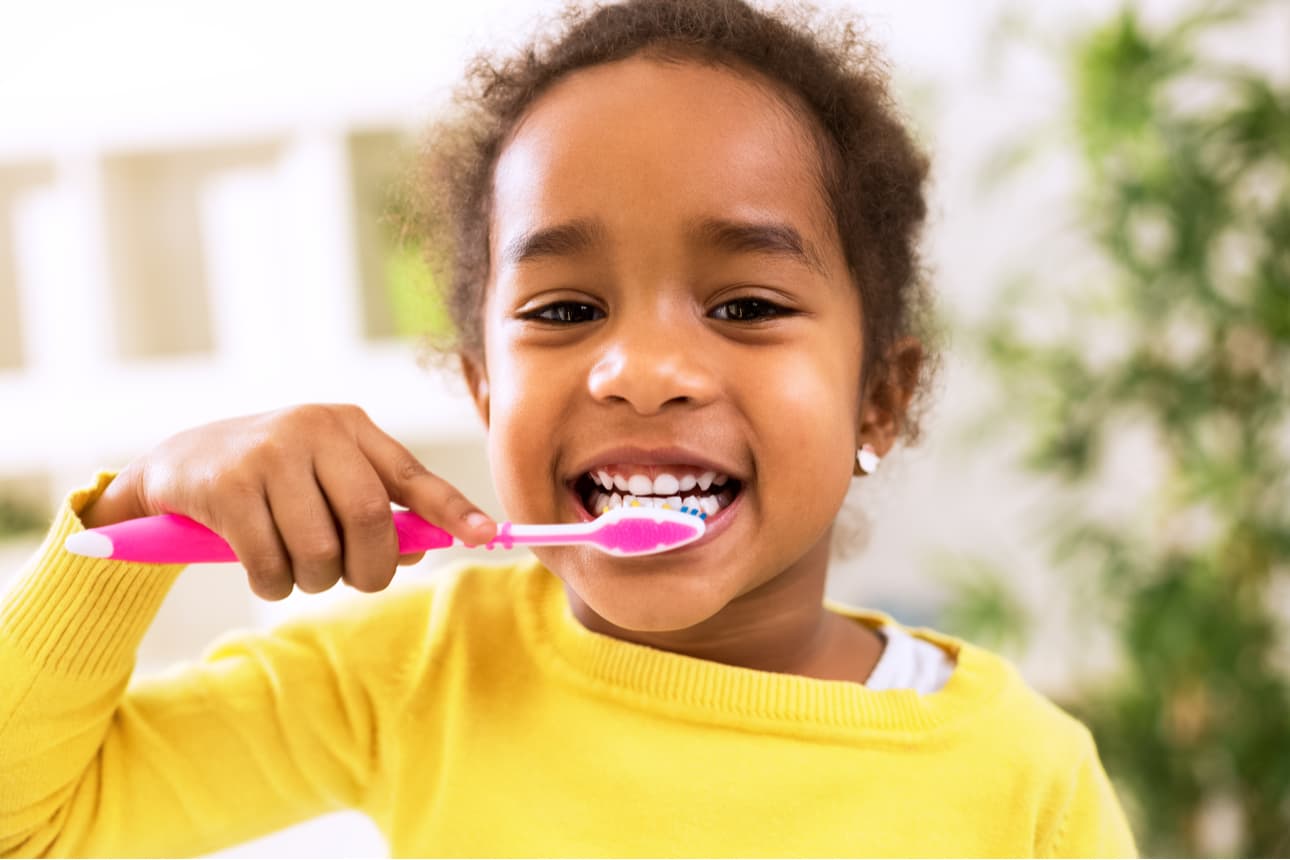Silver diamine fluoride (SDF) is a clear liquid that contains both silver and fluoride. It is applied to the surface of your child’s teeth in order to help prevent or slow down dental decay. The silver found in SDF acts as an antibacterial treatment, while the fluoride works to strengthen tooth enamel. Although SDF cannot completely restore the tooth, it helps to pause cavity development by killing bacteria to prevent decay from spreading. In this way, SDF provides a painless and non-invasive alternative to drilling cavities.
Did You Know?
Although fluoride varnish has been used to protect teeth from cavities, recent research actually shows that silver diamine fluoride is more effective and needs less applications than fluoride varnish. While fluoride is recommended four times a year, silver diamine fluoride only needs to be applied once a year.
Frequently Asked Questions:
Does my child need SDF?
Your child’s dentist may recommend SDF if your child currently has a cavity or if they are at an increased risk of tooth decay. To determine if SDF is right for your child, schedule a consultation with our pediatric dentists at Carr Pediatric Dentistry.
How is SDF applied at Carr Pediatric Dentistry?
At Carr Pediatric Dentistry, we apply SDF as a topical treatment, meaning that it is applied to the surface of your child’s teeth. First, we will start by isolating the affected tooth with cotton or gauze, then thoroughly dry the tooth using suction. Isolating the area and drying the tooth restricts SDF to the treatment area and prevents it from flowing through the mouth. Once the tooth is dry, SDF is brushed over the tooth. SDF can be used on both decayed and healthy teeth. However, SDF can cause a blackish stain to form on unrestored cavities. For this reason, it is usually recommended for use in the back of the mouth or on primary teeth.
Is SDF safe?
SDF is considered to be a safe dental treatment for children. In cases where side effects do occur, they are mild and can include a metallic taste and temporary gum irritation. However, SDF is not recommended for children with metal allergies or for those who have a possible pulp infection.
What happens after my child has received SDF treatment?
After having SDF treatment, your child’s dentist will schedule a follow up appointment to make sure the SDF treatment is working. In some cases, more SDF may need to be applied to obtain results.

